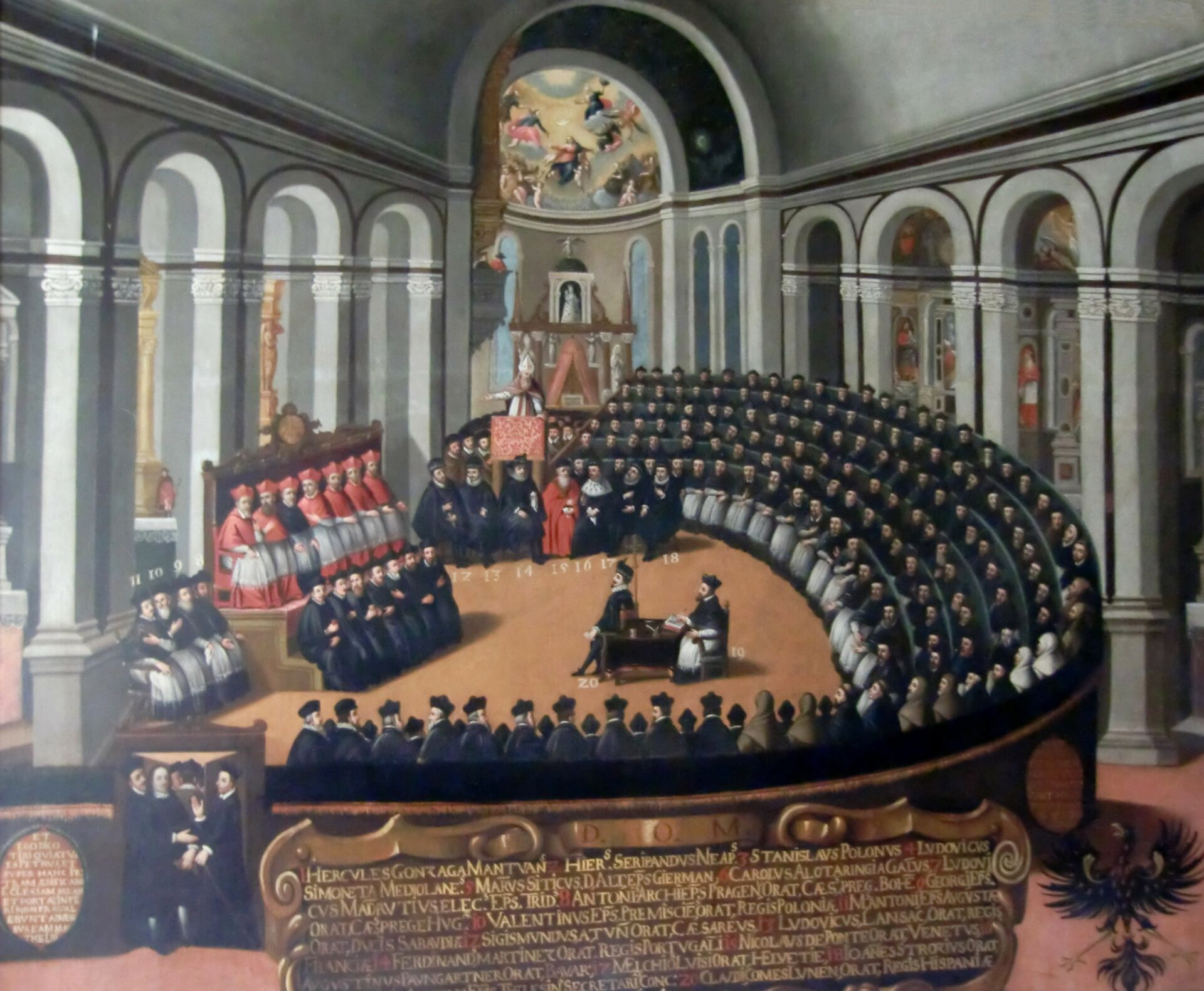If anything, revulsion against the Protestant tendency toward the “priesthood of the believer” hardened Catholic doctrines into a firmer insistence on the miraculous power of the priesthood. Protestant variation promoted Catholic uniformity. Not even on indulgences did the church yield; interpreted as a spiritual rather than a monetary transaction, indulgences were reaffirmed by the Council of Trent.
The council met in Trent on the Alpine border of Italy in 1545 at the call of Paul III (1534-1549), the first of a line of reforming popes. Paul realized that reform of the church was overdue. To liberal Catholics, however, the Council of Trent seemed an instrument in the hands of the popes and the Jesuits. In theory it was meant to provide at least a chance for reconciliation with the Protestants, and leading conservative Protestants were invited but did not attend.
The French clergy did not cooperate freely, and part of the work of the Council of Trent was not accepted in France for fifty years. The council was caught in a web of religious wars and political intrigues, and its work was several times interrupted. Nevertheless, it continued to meet off and on for twenty years until it completed its work of reaffirming and codifying doctrine in 1564.
The Council of Trent reaffirmed the essential role of the priesthood, of all seven sacraments, and of the importance of both faith and works, and it maintained that both the Scriptures and the spokesmen of the church were authorities on theology. It insisted on the strict observance of clerical vows and on the end of such abuses as absentee bishops and the sale of church offices. It imposed censorship on a large scale to promote discipline among the laity, issuing the Index—a list of books that Catholics were not to read because of the peril to their faith, including the works of such anticlericals as Machiavelli and Boccaccio and the writings of heretics and Protestants.
The strength of the Catholic Reformation is shown by the fact that, once it was well launched, the Protestants made few further territorial gains. Within a century of Luther’s revolt, the broad lines of the territorial division between areas dominantly Roman Catholic and areas dominantly Protestant were established. No significant part of Europe turned Protestant after 1580—when the United Netherlands was created—and much of central Europe had changed from Protestant to Catholic by 1650, either by persuasion (as in Poland) or by direct force (as in Bohemia).
England, Scotland, Holland, northern and eastern Germany (with a southward projection toward Switzerland), and Scandinavia thereafter were predominantly Protestant. Ireland, Belgium, France, southern Germany (with a northern projection in the Rhine valley), the Habsburg lands, Poland, Italy, Spain, and Portugal were predominantly Catholic. There were strong Catholic minorities in England, Scotland, and Holland, and the two faiths mingled confusedly in Germany. There were Protestant minorities in Ireland, France, and some of the Habsburg lands, notably Hungary, that the Jesuits had won back.

